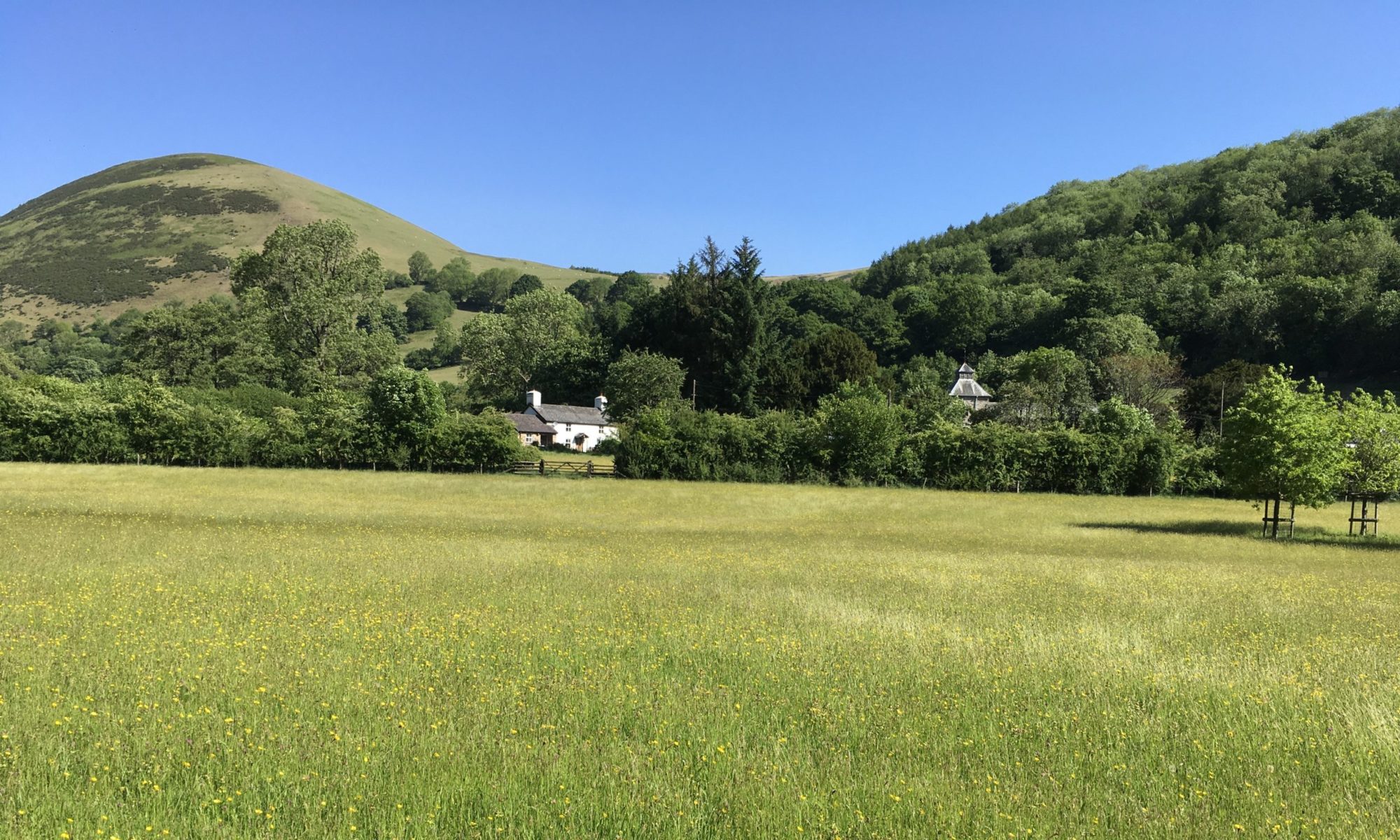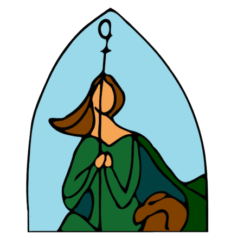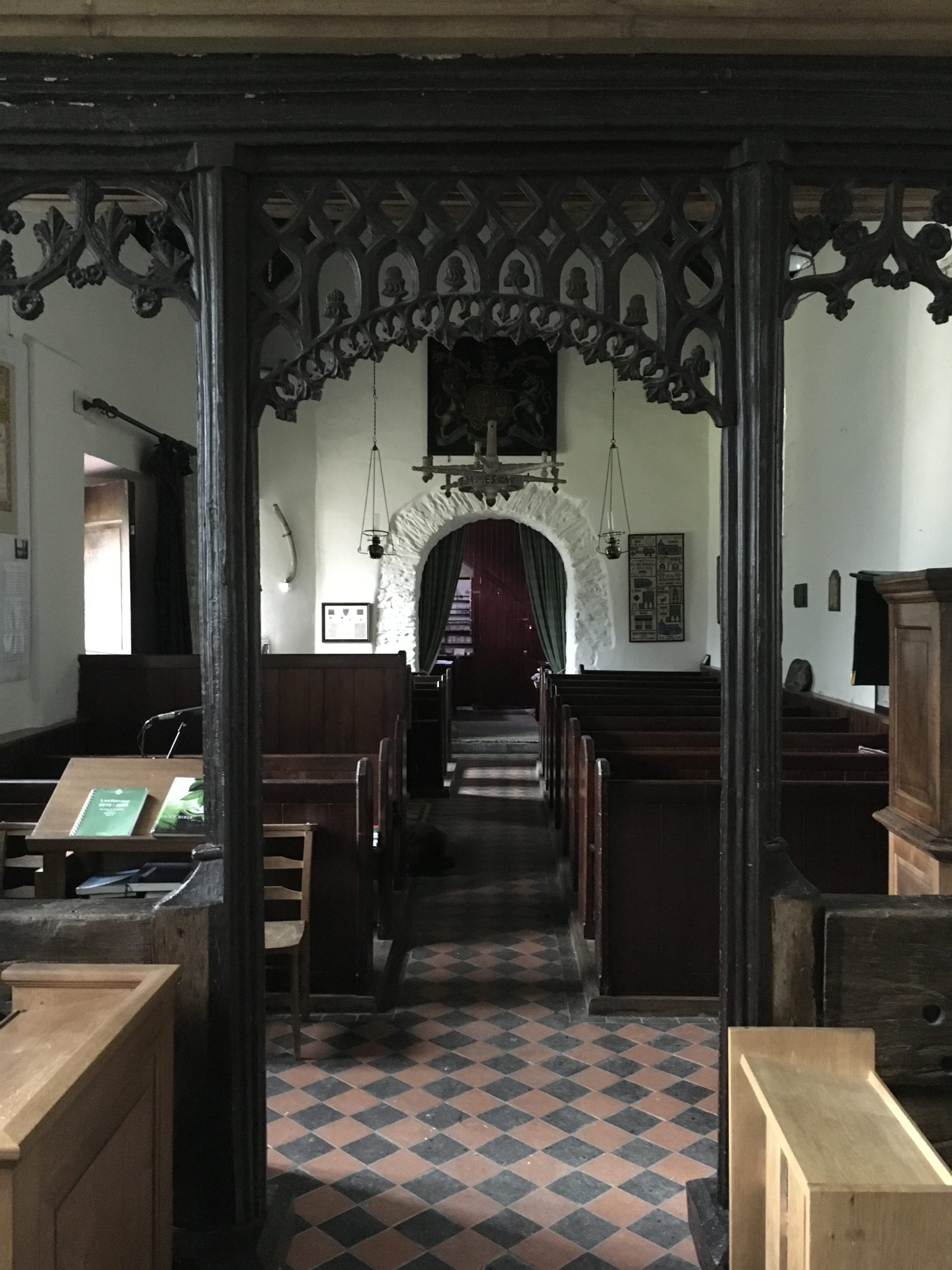
The Shrine Church of Saint Melangell is one of the loveliest small churches in Britain and one of the most remote. The Church is a Grade 1 listed building and there has been a Christian Church here for over 1200 years. Set in a place of great beauty deep in the Berwyn Mountains, the church stands in a round churchyard, once a Bronze Age site, ringed by ancient yew trees estimated to be two thousand years old. Parts of the building date from the 12th Century though the most recent, a rebuilding of the apse on its original foundations, was completed only in 1990. The impression is still that of a simple Norman church, well loved and beautified over the years.
The Setting

Saint Melangell’s Church is found in Pennant Melangell, (Pennant means ‘head of the stream’). The Church is surrounded by the Berwyn mountain range and sits near to the end of the deep bowl of the valley, with the waterfall and valley end beyond.
Originally, the medieval Parish of Melangell was vast, covering much of the upper Tanat valley to the North and the area towards Llanwddyn and Llanrhaeadr-ym-Mochnant in the South. At that time, the village was larger and included two inns. Today, there are only three houses remaining near the church and a further handful scattered around the valley.
The Churchyard
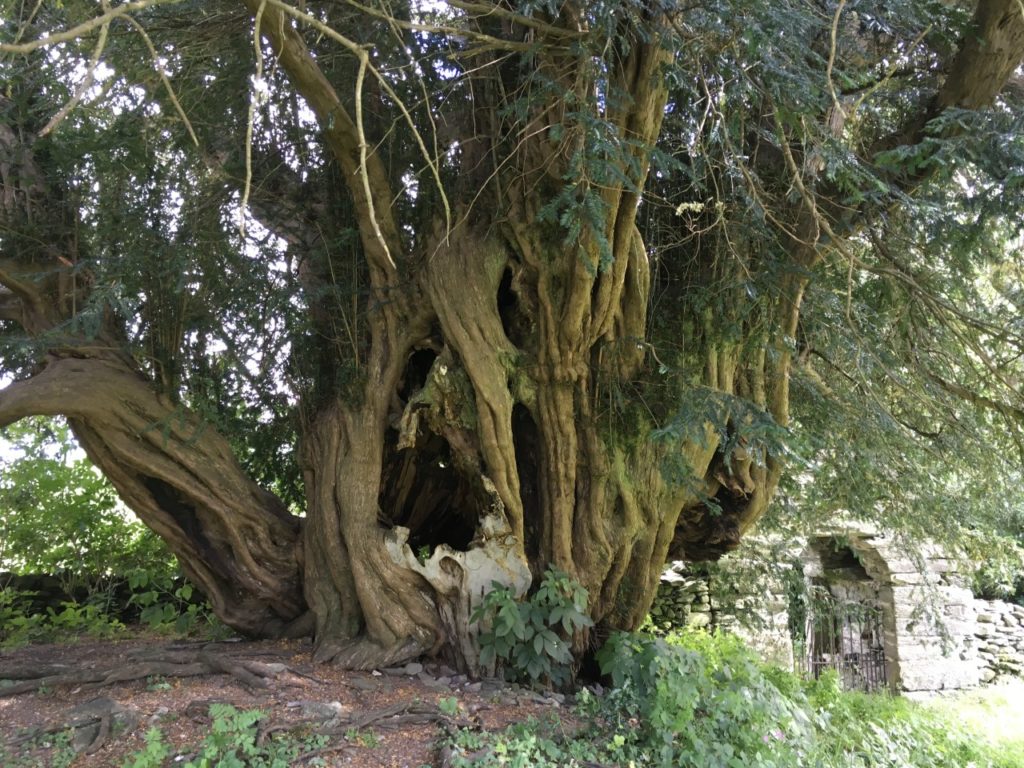
The Churchyard is almost circular and has been used since ancient times. Bronze age burial pits have been found with remains carbon dated to between 1000 and 1500 BC.
There are four Yew trees here which were examined by The Conservation Foundation and certified to be around 2000 years old. To the North of the churchyard, another was planted to commemorate the restoration of the church in 1878.
The Lych-gate is thought to date from the late sixteenth to early seventeenth century. Faint text found on the South-east internal face has been reproduced and the slate plaque mounted above the Lych-gate which reads:
Tuedda’n bur at Weddi – dy galon 
Gwylia wrth addoli,
A duw unig Daioni
Yma’n dda anrhyedda di.
(Turn purely to prayer, Keep your heart for worship, Here give the honour due. To God the only goodness)
Gravestones dating from 1680 can be found for many of the families across the parish; including prominent families such as the Davies of Trefechain; Thomas and Davies families of Llechweddygarth; the Roberts and Ffoulkes families of Cwmllech; the Evans of Plas Du and Jones of Blaen y Cwm.
The harpist Nanci Richards was buried here in 1979 close to her teacher Tom Lloyd. She was born and died in the valley.
We also have a small number of War Graves in the churchyard. A sub page has been created with details of the graves and biographies of those buried there, which can be found here.
The Exterior of the Church
The church building has a complex history (more details can be found in our guidebook), with many periods of extension, rebuilding and renovation over the centuries. It is though that the existing stone church replaced an earlier wooden structure.
The Apse

The curved apse to be found to the east of the church has a particularly interesting history. A square structure stood in its place until 1989, which was used a schoolroom, then a vestry, although it was known as the ‘Cell y bedd’ or grave chamber. This structure became unsafe and when it was decided to rebuild it, the original curved foundations were discovered. A decision was made to controversially rebuild in the original shape but using the existing stones.
The Nave
The oldest remaining features of the building from the eleventh century are the doorway and narrow lancet window in the North wall with ashlar surround.
The font dates to the twelfth century and is also thought to have been made for the original building.
Many of the other features date from an extensive restoration of 1876-77.
To the east, a fifteenth century rood screen crosses the span of the whole church. This was moved and its accompanying figures of Christ, Virgin Mary and Saint John lost after the reformation. It was returned to what is believed to be its former position and a new gallery constructed in the 1989 renovations.

The oak screen which crossed the church below the rood screen is from the fifteenth century; each panel carved from a single piece of oak. Here you will find carved friezes of oak leaves, vine leaves, roses, a hand, a mythical bird and a ‘green man’ as well as a depiction of the legend of St Melangell.
The Shrine
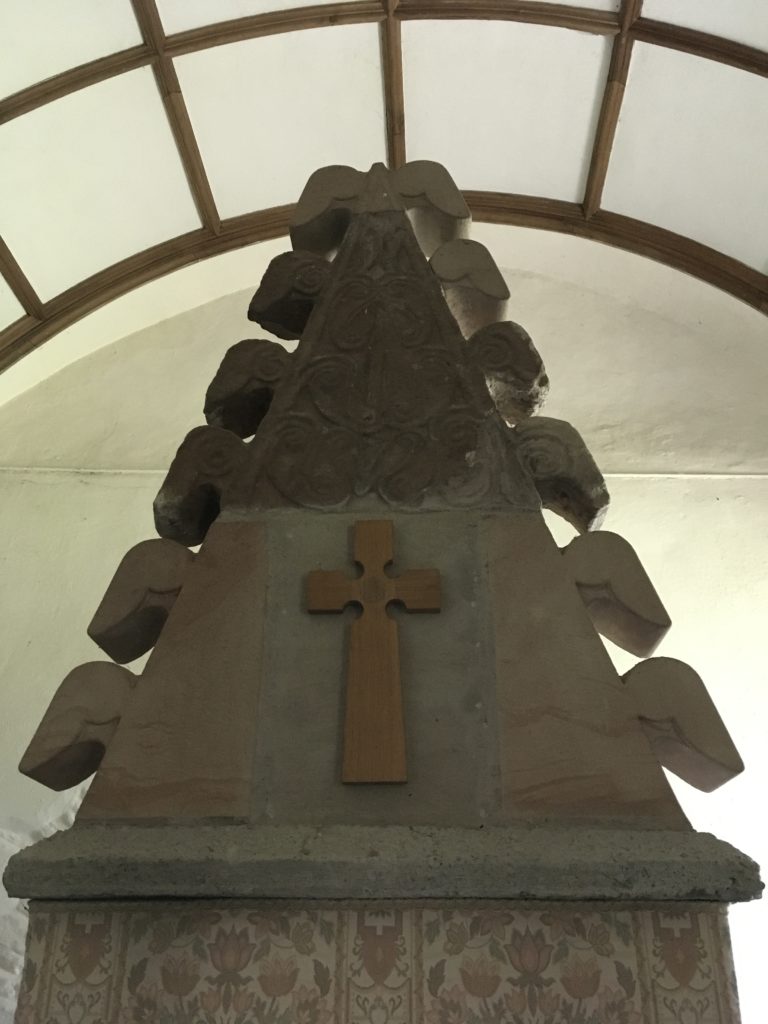
The Shrine of Saint Melangell is thought to have been constructed around 1160-70 to house the relics of the Saint. In 1561, the shrine was ordered to be demolished. Stones from the shrine were built into the Lych gate and into parts of the wall of the nave, (rediscovered in 1894). Some of the stones were recovered and the shrine was rebuilt in 1989 in its present position in the chancel, with any missing stones being clearly identified by the concrete used to avoid any confusion by their replacement.
The relics of Saint Melangell

In the cell y bedd, you will find a raised stone which marks where the Saint was thought to have been buried. During an excavation in 1958, skeletal remains were found beneath the floor of the cell y bedd (and further fragments in 1989). A lead casket containing the bones was examined by an orthopaedic surgeon who identified them as being from a woman around 5ft tall. These have been placed in the reconstructed shrine.
Other interesting and unique features
Above the oak screen in the chancel there hangs a large eighteenth century reredos panel, painted on plaster. It depicts the ten commandments, Apostles’ creed and Lord’s prayer in Welsh. This was discovered covered by a Victorian copy in wood (now to be found in the tower). The figures depicted on it are unique in Wales.

The carved recumbent effigies on either side of the chancel spent many years in the churchyard and were only returned to the church in 1876-77, so have suffered much weathering. The fourteenth century female figure (to the South), represents St Melangell, with two hares to her sides. The male effigy dates to 1315 depicting Madog ab lorwerth, who is also know as lorwerth Dryndwyn – Edward of the broken nose. He was the eldest son of Owain Gwynedd. He is said to have been slain in the hills above Pennant.
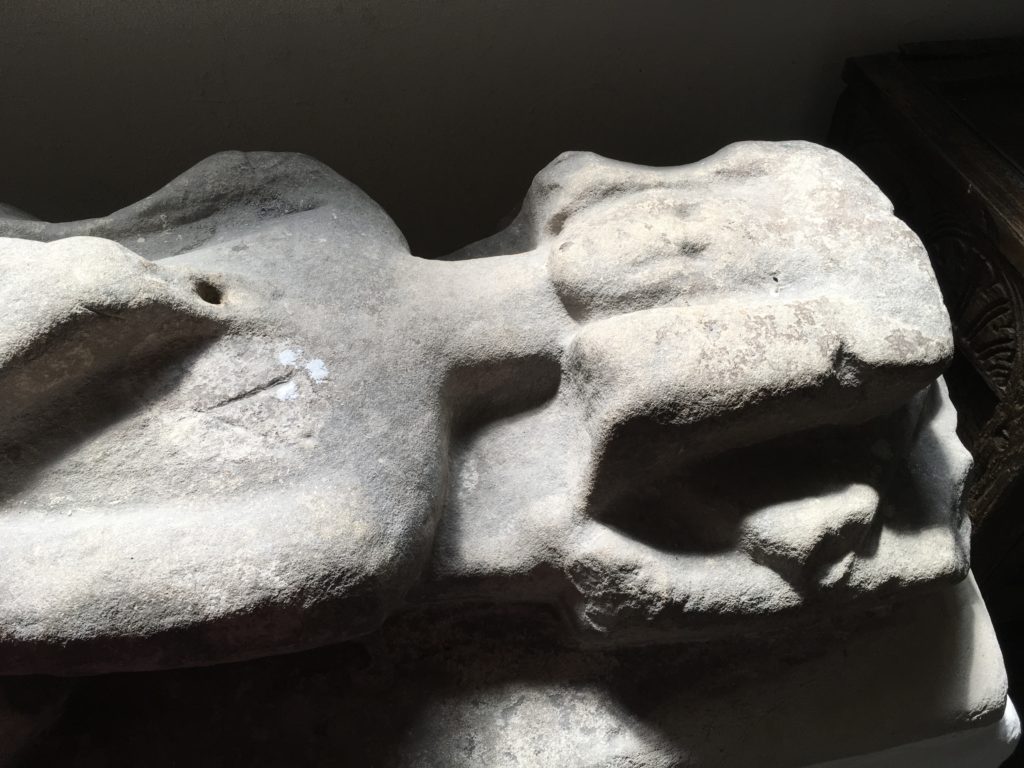
There are many other curious and interesting finds within the church. These include fragments of stenciled designs believed to be medieval in origin; the rare and unusual 1733 candelabrum; carvings in stone by Meical watts of Melangell and the hare; memorial tablets and sculptures; and ‘the giants rib’ – a whale’s rib of unknown origin but much speculation.

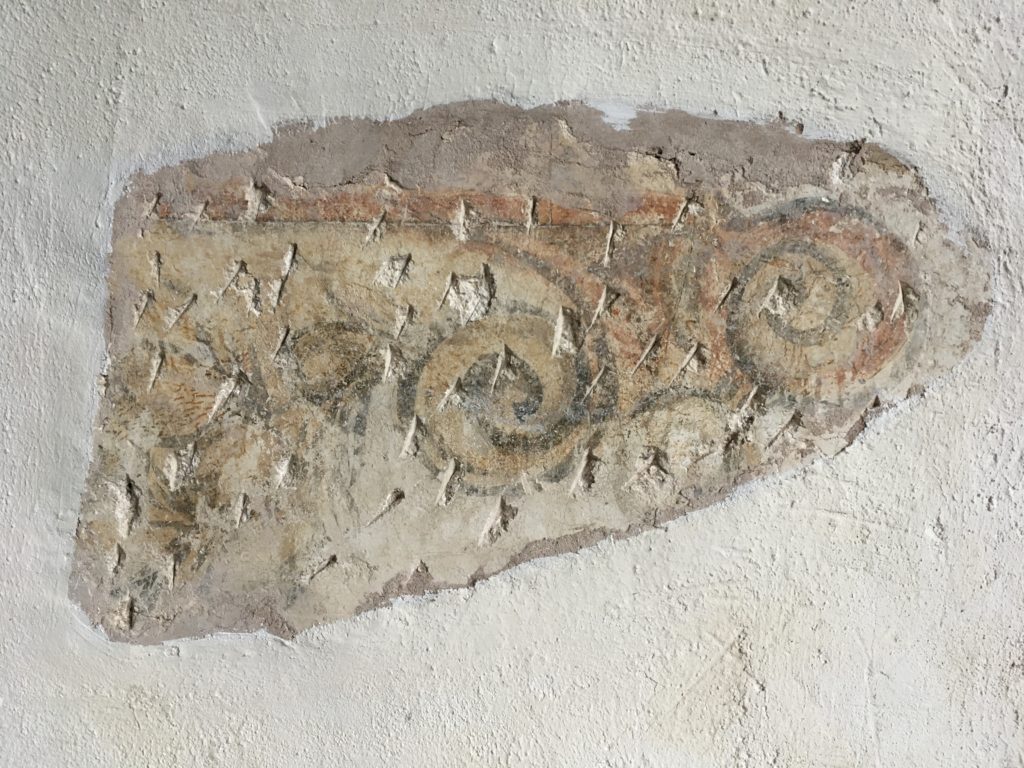
The Shrine Church of Saint Melangell has always been a Pilgrims’ Church, and visitors come from all over Britain and around the world. There are no endowments or financial support from Church or State. We hope that you will want to contribute to the upkeep of this beautiful building and to the ministry here.
Pennant Melangell is a place beyond words and far from the rush of 21st century life; a place where God speaks in the silence and where all people have an opportunity to experience a sense of the Holy. The restored church is open daily for prayer and worship. We welcome all pilgrims and visitors and look forward to meeting you on your pilgrimage and hope you will take away a lasting sense of the peace of Christ.
